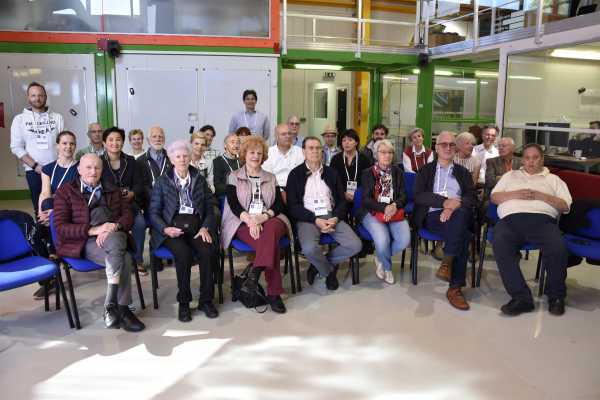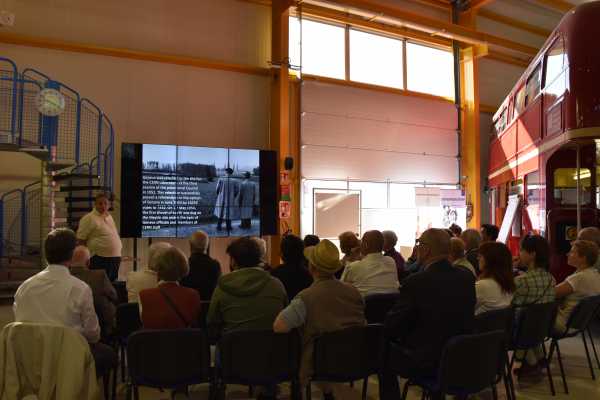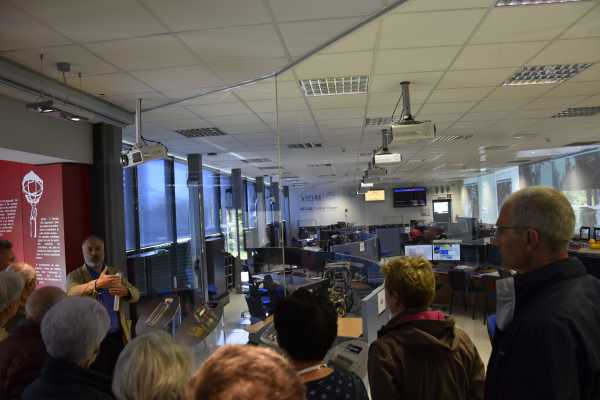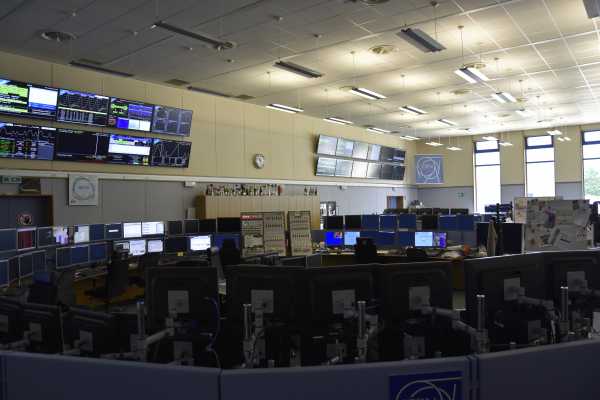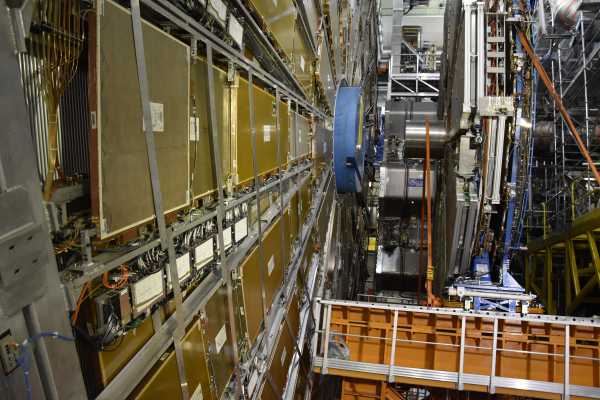CERN and the Secrets of the Universe
- Chapter Ticino Alumni
- 150 Years
To celebrate the 150th anniversary of ETH Alumni, on May 31st, 2019, OG Ticino organized a visit to CERN, the Conseil Européen pour la Recherche Nucléaire, in Geneva. The 28 participants had a very intense and interesting time: We discovered the most advanced laboratory for particle physics. We were guided by ETH Alumnus Prof. Marzio Nessi, and Prof. Alessandro Cerri.
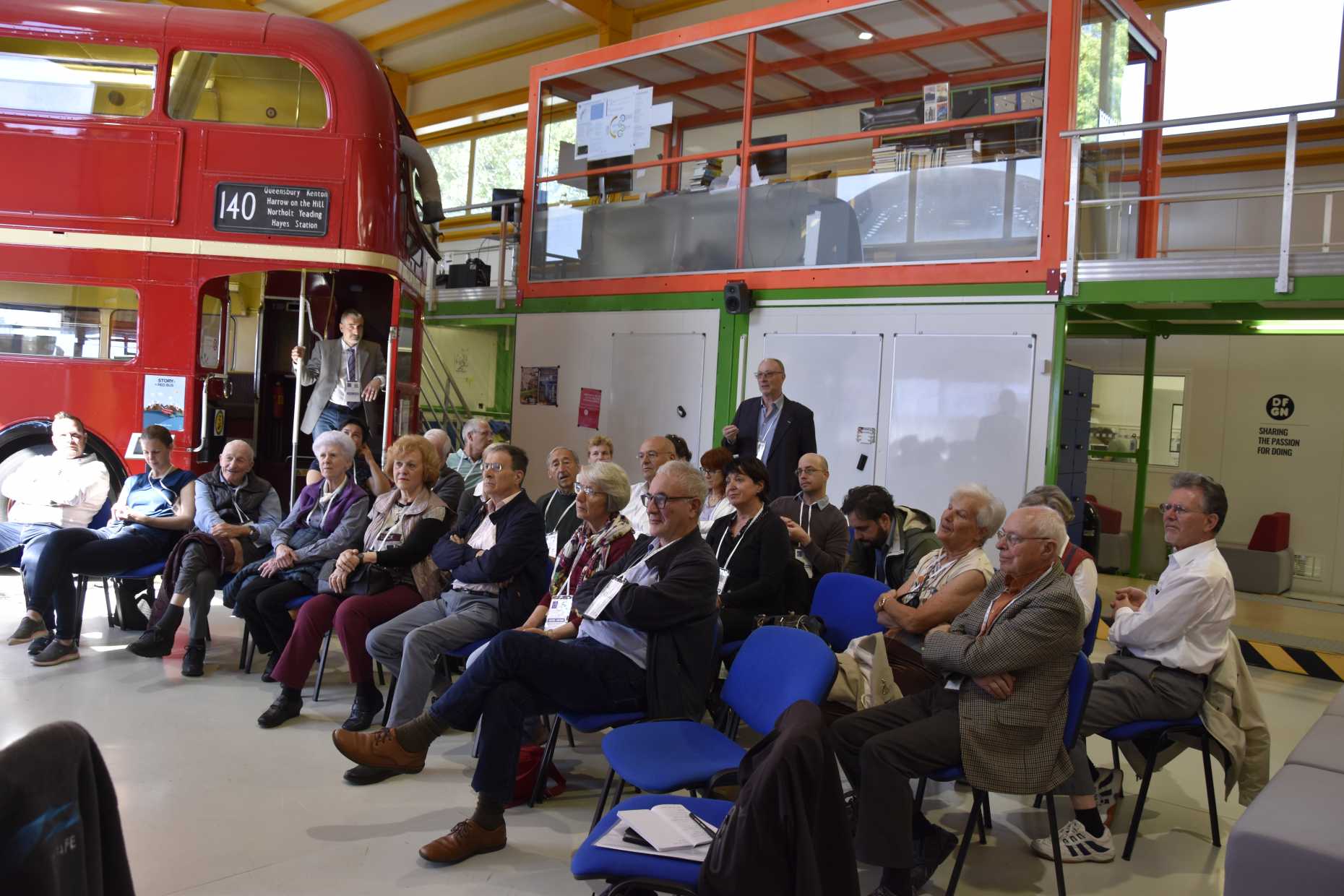
Fundamental research
Fundamental research studies nature’s building blocks and is trying to answer fundamental questions such as: what is the history of the last 13'700'000'000 years, how is our future going to be from the perspective of humanity and the universe?
Fundamental research in physics is currently following three main strategic streams: the first is called energy frontier and is dealing with collision of particles; the second is the intensity frontier, which studies rare situations, and the third one is the cosmic frontier, which focuses on the universe.
CERN's mission fits in the first realm. Firstly, CERN pushes back frontiers of knowledge. Secondly, it develops new technologies for particle accelerators and detectors. Thirdly, CERN trains scientists and engineers. Finally, CERN unites people from different countries and cultures.
CERN focuses on the energy frontier and offers to the scientific community the most powerful particle accelerator and collider in the world. Thanks to its laboratories and infrastructures, it is possible to verify physical theories, and collect data to feed into new studies.
Fundamental research may seem quite distant from daily life; in reality, it has produced and continues to produce several fundamentals for various established technologies such as computer tomography in the field of medicine, microchips in the field of electronics, satellites and the global positioning system (GPS).
LHC Accelerator
The Large Hadron Collider (LHC) consist of a 26.86 km long elliptical ring. It is situated at an underground level between 50 and 150 meters at the border between Switzerland and France.
Particles are kept in the desired trajectory by very powerful magnetic fields. For the collision to take place, the system has a tolerance of just 15 microns.
With a temperature of 1.9 K, the inside of the collider represents the coldest place in the whole universe. To imagine the complexity of CERN's operations, the sole process to lower the temperature in the LCH to create the necessary conditions lasts a couple of months.
ATLAS
ATLAS is the detector that collects data about the particles’ collisions. We can consider ATLAS as the "camera" that records the pictures of particle interactions and collisions taking place during the experiments in the accelerator. ATLAS, with 2 million detectors can be compared to a photo camera with a resolution of 100 Megapixels that shoots 40 million pictures per second. Within the collected data, we can find a single interesting event out of ten thousand billion.
ATLAS weights 7'000 tons, it is 46 meters long and 24 meters in diameter. Its weight is similar to that of the Eiffel Tower. Being situated 100 meters underground; it is similar to a ship in a bottle. 182 institutions, 39 countries, 3’000 scientists and 1’050 PhD students have been involved and contributed to the ATLAS project. When ATLAS is active, 8 people monitor its operations 24/24 hours 7/7 days from the control center.
Thanks to the experiments conducted at CERN with the LHC and ATLAS, it was possible to confirm Prof. Higgs' theory and discover the Higgs boson. Since 2012, the "Standard Model", which resisted for more than 50 years, was put into serious doubts and new questions arise around the physical models.
ATLAS is currently under maintenance works until the end of 2020 to improve its performance. After this, CERN plans to run it until 2035 with the objective to discover new particles and new phenomena. Additionally, CERN is looking even further, defining the research strategy for the next 30-40 years.
Deep Underground Neutrino Experiment (DUNE)
After having had lunch at the CERN’s canteen, we moved to CERN’s facilities in Prevassin, where scientists are building prototypes for the Deep Underground Neutrino Experiment (DUNE). This program focuses on rare events and it aims to bring current knowledge far beyond the Standard Model.
DUNE experiment consists in shooting particle beams from the Fermi National Accelerator Laboratory in Batavia, Illinois to the Sanford Underground Research Facility in Lead, South Dakota, at a distance of approximately 1’300 km from the source, and located 1’500 meters underground. Detectors are placed deep underground in a former gold mine, to reduce the interference caused by cosmic rays. Detectors consists of Liquid Argon Time Projection Chamber (LAr TPC).
To create proper conditions for the measurements, scientists need to lower the temperature to -200°C approximately. To do this, they are developing techniques to take 20’000 liters of liquid argon underground. LAr TPC is expected to be operational by 2026 starting with a power of 1.2 MW, which is upgradable to 2.4 MW.
The organization
CERN counts 2'500 internal staff, more than 1'800 external collaborators and 13'000 users. It takes a yearly budget of approximately 1'230 MCHF. It serves the international scientific community and is located on an extraterritorial land at the border between Switzerland and France. CERN's organization is near flat and its culture is based on four main principles: motivation, collaboration, competition, and communication.
About
Prof. Marzio Nessi is from Muralto in Ticino. He holds a Diploma and PhD in Physics from ETH Zürich, he led the construction of ATLAS and he has been its technical coordinator. He is a Physics Professor at the University of Geneva, as well as senior researcher at CERN, where he has contributed to several projects. Since 2012, he is general coordinator of the CERN Neutrino Platform.
Prof. Alessandro Cerri holds a PhD from the Scuola Normale Superiore in Pisa and he is the technical coordinator of the ATLAS project. He is Professor of Physics and Astronomy at the University of Sussex.
